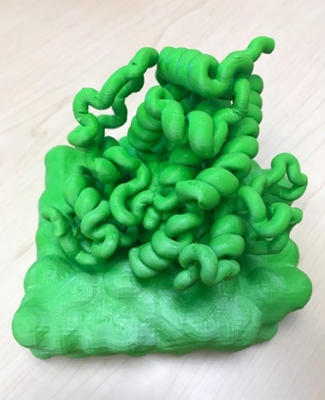Making the Impossible Possible with Dr. Edward Ackad
 Venture down the stairs to the basement of Science East and you might bump into Dr. Edward Ackad, associate professor in the Department of Physics. Outside of teaching quantum mechanics, Ackad researches computational nanophotonics and biophysics. What is that, you might wonder? A quick search online will not turn up a whole lot of information, and that is because Ackad’s research is relatively new with many of his projects being “firsts” in his field.
Venture down the stairs to the basement of Science East and you might bump into Dr. Edward Ackad, associate professor in the Department of Physics. Outside of teaching quantum mechanics, Ackad researches computational nanophotonics and biophysics. What is that, you might wonder? A quick search online will not turn up a whole lot of information, and that is because Ackad’s research is relatively new with many of his projects being “firsts” in his field.
For over a decade, Ackad has been modeling that which we cannot see with the naked eye in order to understand more about the behavior of things like nanoscopic clusters and proteins. Out of the three main divisions of physics–experimental physics, theoretical physics, and computational physics–Ackad’s research falls into the latter, and with a suite of tools, he creates models and simulations that can be viewed first hand. Watch a video on how irradiated clusters explode and then implode; physically hold a 3-D printed enzyme in your hand and find the active site; and, “walk through” a protein in virtual reality–Ackad’s research undoubtedly opens up new possibilities for exploratory learning and those not spinning in physics circles might even find it difficult to leave his lab. “One of the goals of my research is to generate theoretical models and bring the costs of experimental research down,” he said. By embracing these emerging technologies, Ackad is able to search for answers to complex problems that have been previously deemed impossible or inaccessible, largely due to financial constraints.
Currently Ackad is researching human cytochrome P450, an enzyme that plays a major role in drug detoxification in your body. Collaborating with Maria Kontoyianni from SIUE’s School of Pharmacy, they are working on modeling the various geometric configurations of P450. “Determining the various states of P450 will enable us to understand more about the effects of drug metabolism and drug-drug interactions.” Alongside numerous other projects, Ackad has been HCV NS3/4A, a viral nonstructural protein produced by the hepatitis C virus in addition to nanoparticles for which no models exist to date.
See more of Dr. Ackad’s work here.











